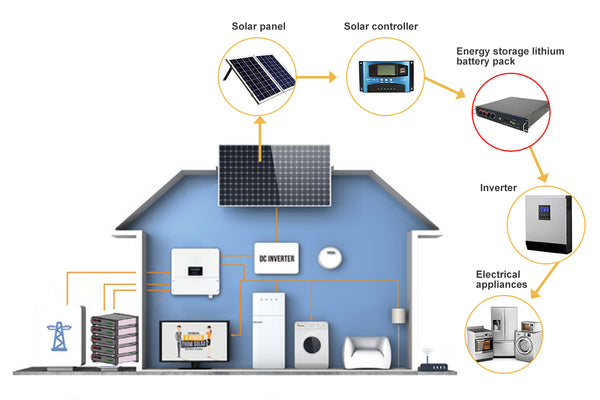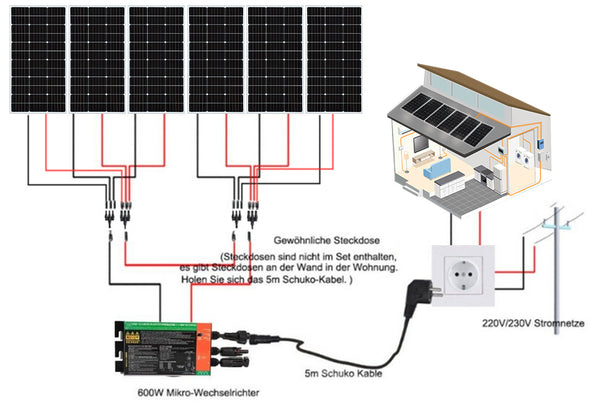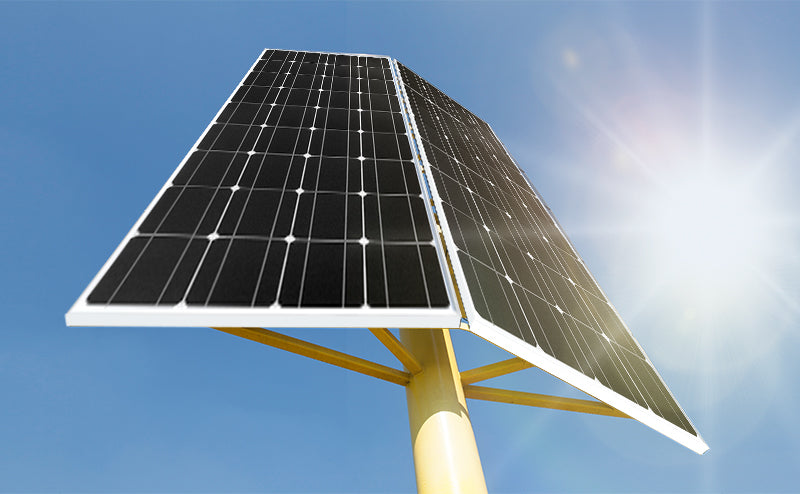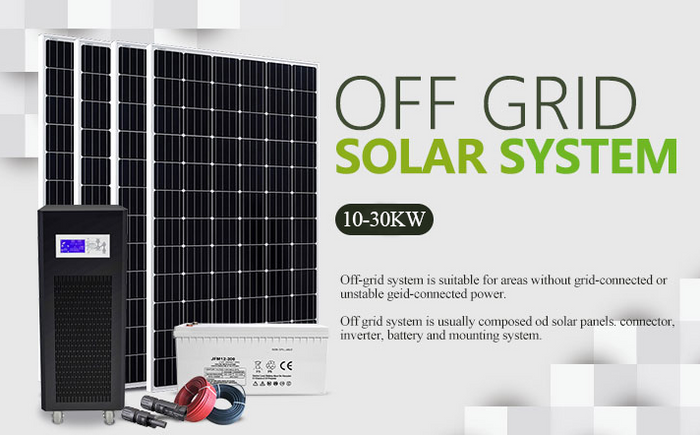Even the most ardent solar evangelists can agree on one limitation solar panels have: they only produce electricity when the sun is shining. But, peak energy use tends to come in the evenings, coinciding with decreased solar generation and causing a supply and demand issue. The thing is, solar panels often pump out more than enough energy during those lower demand hours when the sun is shining to meet peak demand later in the day. This means that efficient solar energy storage can open up a wealth of possibilities for homeowners and businesses alike.

In this blog, we’ll look at solar energy storage in-depth, its benefits, and even tools for modeling it on your solar installs.
What are the benefits of storing solar energy?
Storing this surplus energy is essential to getting the most out of any solar panel system, and can result in cost-savings, more efficient energy grids, and decreased fossil fuel emissions. Storing solar energy has a few main benefits:
Balancing electric loads. If electricity isn’t stored, it has to be used at the moment it’s generated. Energy storage allows surplus generation to be banked for peak-use. As far as renewable energy is concerned, storing surplus power allows the lights to stay on when the sun goes down or the wind stops blowing. Simply put, energy storage allows an energy reservoir to be charged when generation is high and demand is low, then released when generation diminishes and demand grows.
Filling in the gaps. Short-term solar energy storage allows for consistent energy flow during brief disruptions in generators, such as passing clouds or routine maintenance.
Energy resilience. The energy grid is vulnerable to disruptions and outages due to anything from wildfires to severe weather. Solar energy storage creates a protective bubble during disruptive events by decentralizing where we get our energy from.
Reducing carbon footprint. With more control over the amount of solar energy you use, battery storage can reduce your property’s carbon footprint in areas with fossil fuel-based utility power. Large solar batteries can also be used to help charge electric vehicles and turn any appliance in your home into a “solar-powered” device.
Savings from electric bills. If you live in a state that has no solar net energy metering, or policies that don’t fairly compensate you for the solar energy you generate, battery storage can help lower your utility bills while consuming more of your own power. So, while you may not be compensated as much for excess energy sent to the grid, any additional solar power generated and stored throughout the day can be discharged from a battery at night or on cloudy days in the place of utility consumption.
One of the big components of NEM 3 is that it has, “notably higher on-peak charges and lower off-peak charges” for electricity. Likewise, the export rate is lowest is the middle of the day, when solar energy is plentiful. Since “peak” hours are from 4pm – 9pm, this means, generally, that customers are exporting power to the grid when the rate they receive is the lowest, and using grid power at peak times, when it’s most expensive. Enter battery storage: Any solar energy that can be stored in a battery during non-peak hours and used during peak times will be much more valuable for the consumer.

How is solar energy stored?
Solar energy storage can be broken into three general categories: battery, thermal, and mechanical. Let’s take a quick look at each.
What is battery storage?
Batteries are by far the most common way for residential installations to store solar energy. When solar energy is pumped into a battery, a chemical reaction among the battery components stores the energy. The reaction is reversed when the battery is discharged, allowing current to exit the battery. Lithium-ion batteries are most commonly used in solar applications, and new battery technology is expanding rapidly, which promises to yield cheaper, more scalable battery storage solutions. In fact, U.S. energy storage is expected to reach nearly 7.5 GW annually by 2025, a sixfold growth from 2020, representing a market worth $7.3 billion.
What is thermal storage?
Thermal energy storage uses various mediums — such as water or molten salt — to absorb and retain heat from the sun. This heated medium is stored in an insulated tank until the energy is needed, usually to boil water for energy generation.
What is mechanical storage?
Mechanical energy storage takes advantage of the potential energy of an object to generate electricity. Mechanical storage methods convert surplus electrical power into mechanical power, which is converted back into electricity for later use. There are three prominent mechanical energy storage systems:
Flywheel. This method uses surplus electricity to spin a flywheel, which later generates electricity to supply quick energy during peak demand times.
Pumped hydro. With pumped hydro, water is pumped uphill to a reservoir located above turbine generators. The water is allowed to flow through turbines and generate electricity when demand is high.
Compressed air. With this energy storage system, compressed air is pumped into large vessels such as a tank or underground formation. The air is released to generate electricity during peak demand.

The best way to store solar energy
There’s no silver bullet solution for solar energy storage. Solar energy storage solutions depend on your requirements and available resources. Let’s look at some common solar energy storage options for commercial and home applications.
Commercial solar energy storage
Utility companies and other businesses generally have bigger budgets than individual households, making mechanical and thermal storage viable options. Though costs for these storage methods can be high, they help utilities keep up with peak energy demand.
Grid energy storage with next-generation batteries. 2020 was a record year for new energy storage in the United States. In the third quarter alone, the nation deployed 476 MW of new storage, a 240% increase from the record-breaking previous quarter. Most of the new deployments are one-hour front-of-the-meter (FTM) storage solutions, but nonetheless offer a promising look into the future of commercial solar energy storage.
Compressed air. The most recent government estimates calculate compressed air costs at $105/kWh, making it the most cost-effective mechanical storage option for large-scale applications.
Pumped hydro. Surplus solar energy can be used to pump water uphill, creating a massive amount of potential energy. Current pumped hydro costs are around $165/kWh, making it the second-best option for mechanical energy storage at scale. It’s only available in certain areas, however, as new pumped hydro involves high upfront costs and significant regulatory hurdles.
Home solar energy storage
Residential solar has myriad benefits, including resiliency, cost savings, and decentralization of electrical production (otherwise known as “virtual power plants”). But the commercial energy storage methods we discussed above are likely cost-prohibitive for the average homeowner. Thankfully, battery storage can now offer homeowners a cost-effective and efficient way to store solar energy.
Lithium-ion batteries are the go-to for home solar energy storage. They’re relatively cheap (and getting cheaper), low profile, and suited for a range of needs. Other batteries commonly available for residential use include saltwater batteries and lead-acid batteries.
Regardless of the battery type, home backup batteries allow homeowners to save energy during high production, low demand times (i.e. during the workday) for use during high demand periods when generation diminishes. Home solar energy storage inherits the same benefits of large-scale solar energy storage, translating into resiliency, uninterrupted energy, and cost savings. And these benefits go directly to the homeowner.
Technology to help design solar battery storage
Designing a storage system along with a solar installation used to me labor-intensive and include a fair amount of guesswork. Now, software like Solarparts' includes battery storage as part of its offerings.
Using Solarparts' Battery Storage Tool, solar installers can analyze load off-set, calculate the projected price of a project, forecast smart battery sizing recommendations based on customer priorities, and present it to the customer in a compelling, easy-to-understand way.
Solarparts has also introduced battery self-consumption modeling. You can learn more here.
So, while the technology used to store solar energy may seem complicated or overwhelming to some customers, Solarparts can help you break down the complexities for customers with interactive and easy-to-understand models of performance and savings.
To learn more about photovoltaic power generation, please follow SOLARPARTS official website:
Twitter: Solarparts Instagram: Solarparts
Tumblr: Solarparts Pinterest: Solarparts
Facebook: Shenzhen Solarparts Inc
Email address: Philip@isolarparts.com
Homepage: www.isolarparts.com



